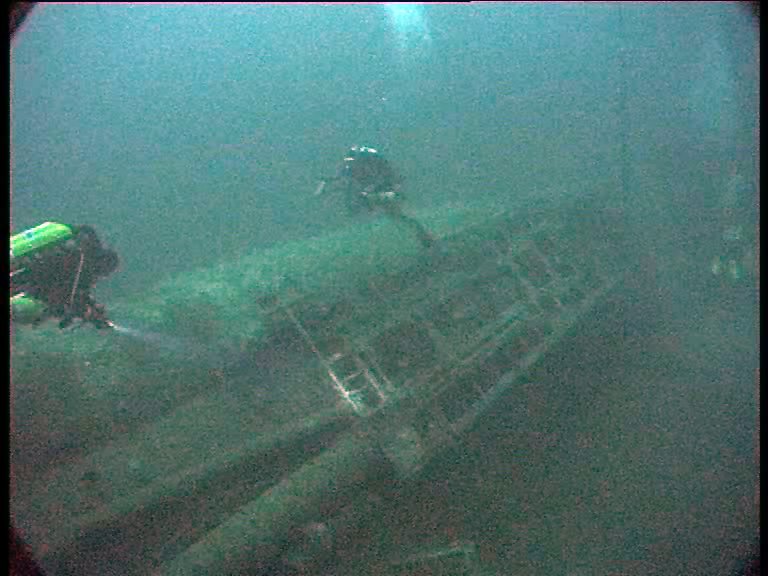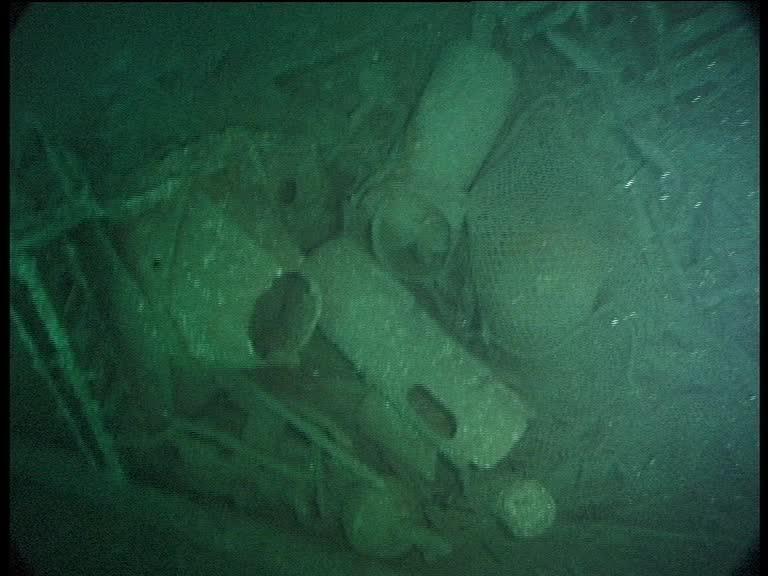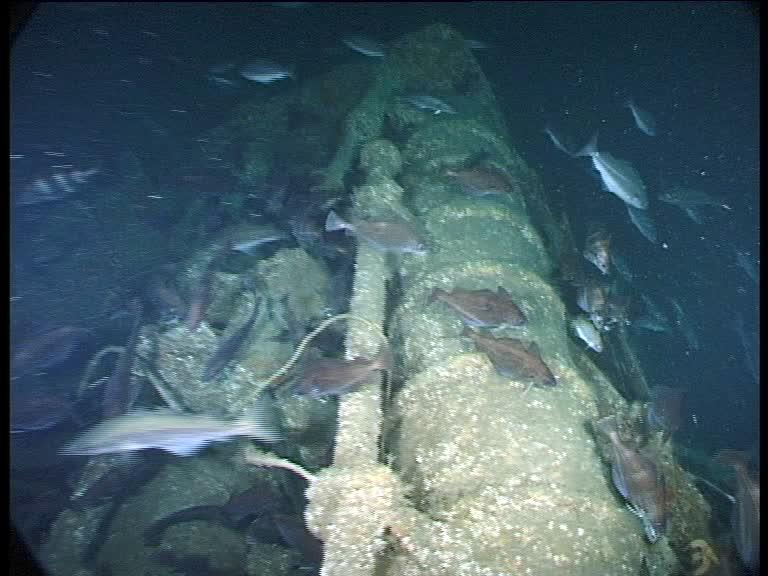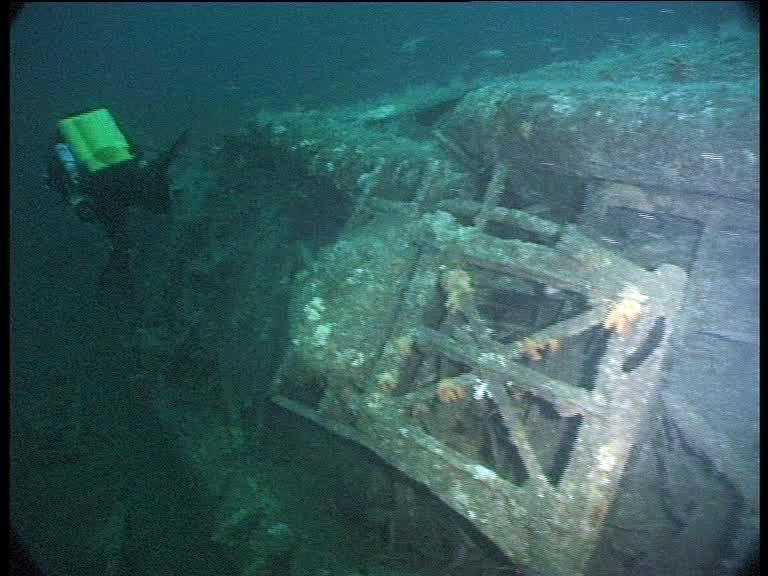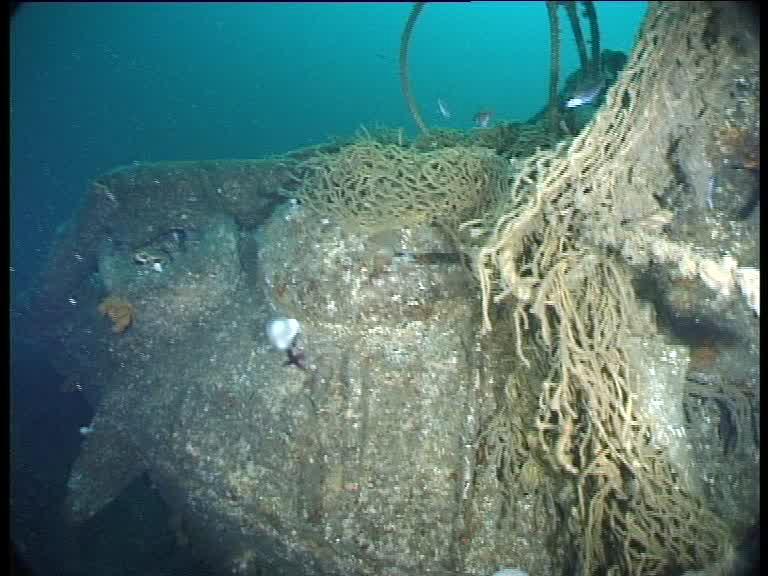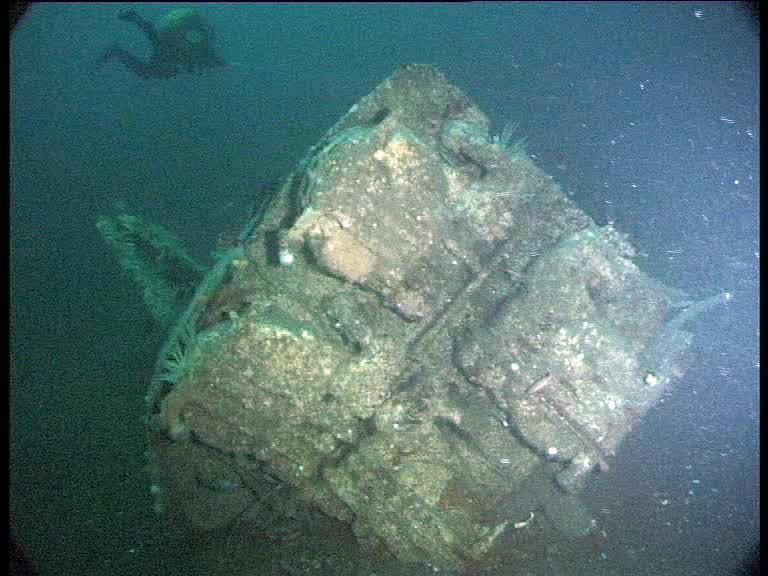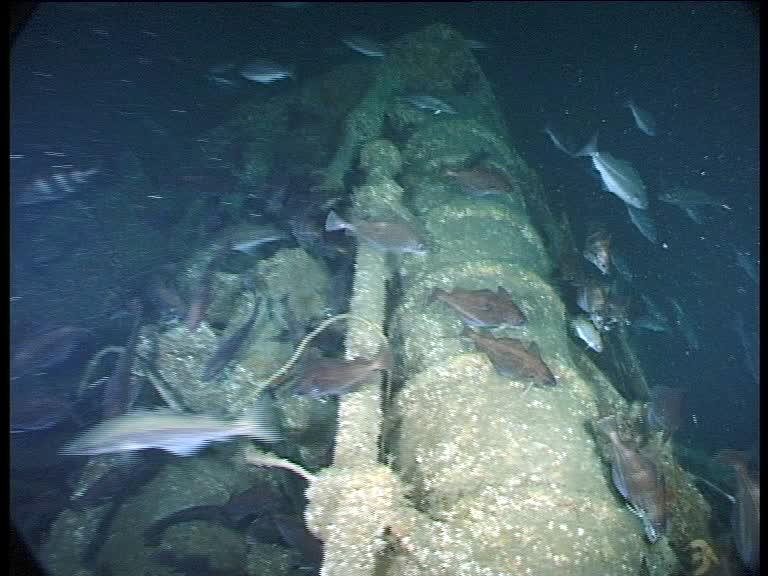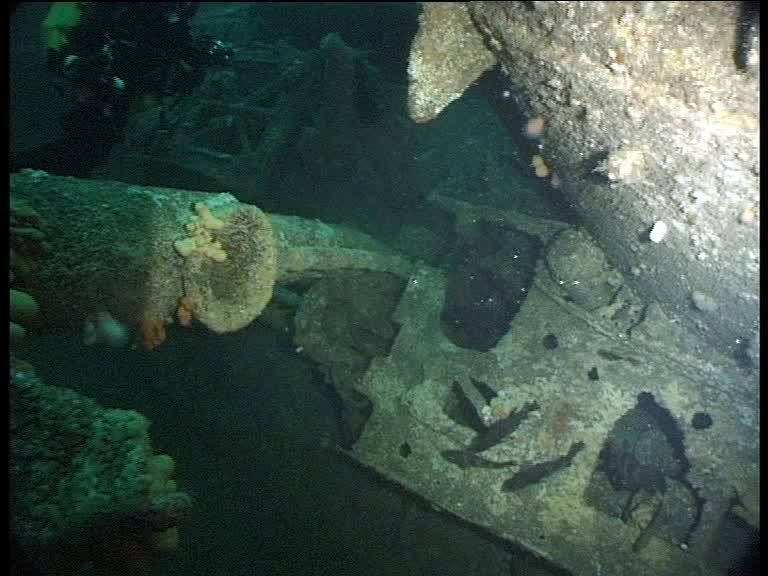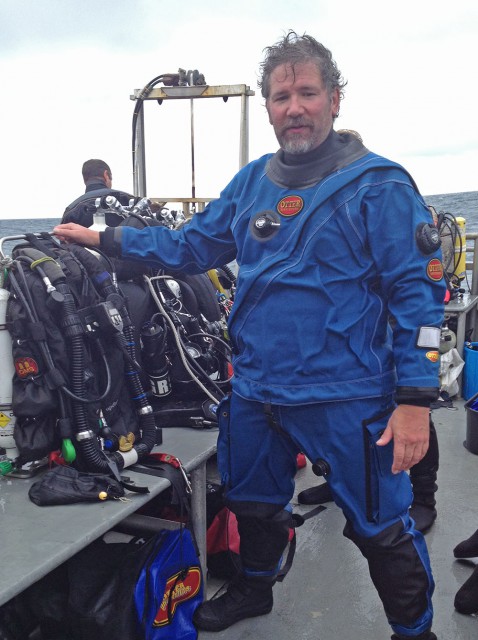U-1003 escaped an attack by a 120 Squadron Liberator on 20 March 1945 but was rammed at periscope depth on the next evening by the RCN frigate “New Glasgow”. Seriously damaged she went to the bottom and was depth charged by a number of warships.
Early next morning Strübing surfaced to check the extensive damage but had to dive quickly as a ship approached. Books say that U-1003 proceeded northwestwards and was leaking badly, had to dive again when they surfaced to re-charge the batteries, but U-1003 was finished when the batteries failed and in the early morning of 23 March the pumps stopped working.
Strübing surfaced and the crew abandoned ship, 31 were rescued by HMCS “Thetford Mines” (2 died later) and 18 men including the commander died in the water. (source)
Innes McCartney discovered the wreck in 2001.
OK – this gallery will feature a Type VIIC/41 U-boat which was scuttled after a collision with the Corvette HMCS New Glasgow in March 1945. Stunning visibility and a wreck with a very unique damage pattern (Innes McCartney).
Usual big pile of debris under the conning tower/wintergarden area. 37mm gun mount and ru ammunition containers (Innes McCartney).
Steel torpedo tube of a late-war U-boat (Innes McCartney).
Also the auxiliary high pressure air cylinders and Marcks container (Innes McCartney) 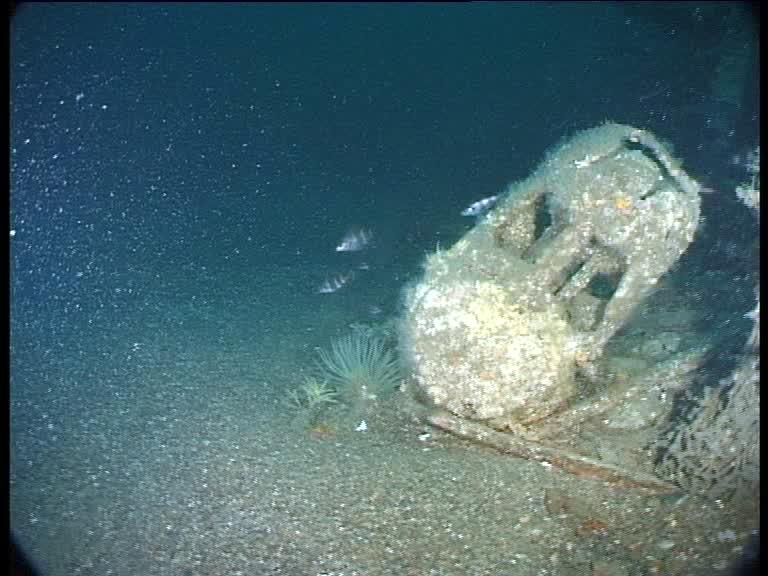
The head of the snorkel mast seen from above. It does not appear to have been fitted with the radar warning device – is this why it did not detect the oncoming Corvette? (Innes McCartney).
The sharp-eyed will spot that the sky periscope is bent back flat along the starboard side of the conning tower. This was most likely caused in the collision with HMCS New Glasgow (Innes McCartney). 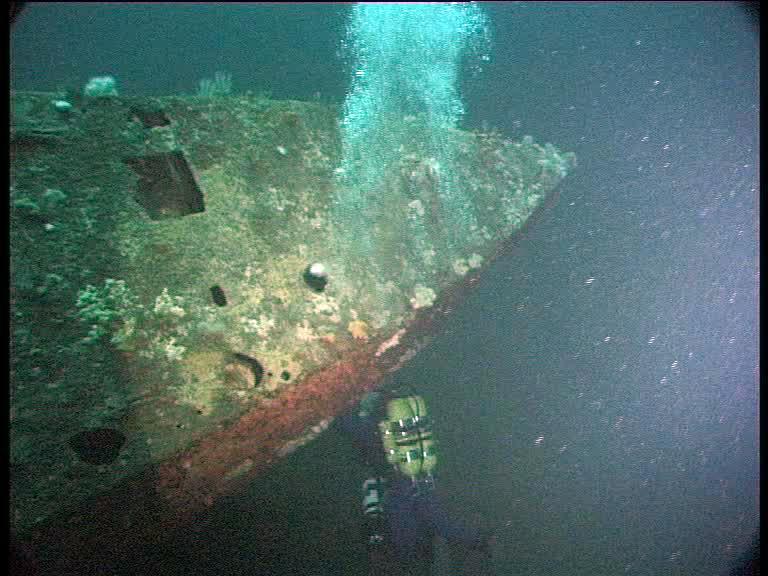
The beautiful arrowhead shaped stern of the Type VIIC U-boat – otherwise an ugly design (compare it to HMS Tantivy or U2511) (Innes McCartney). 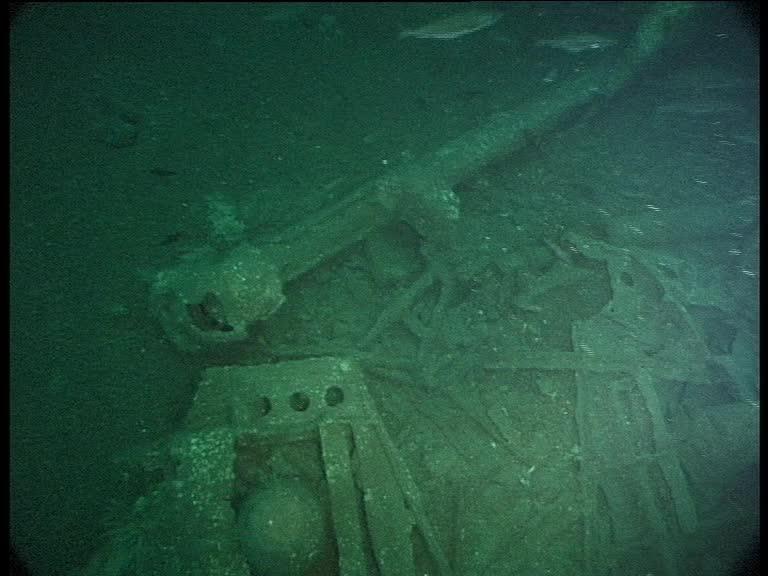
The snorkel mast lies on the seabed (Innes McCartney)
The entire bow has sheared off revealing the four inner torpedo doors as now the foremost part of the wreck (Innes McCartney) 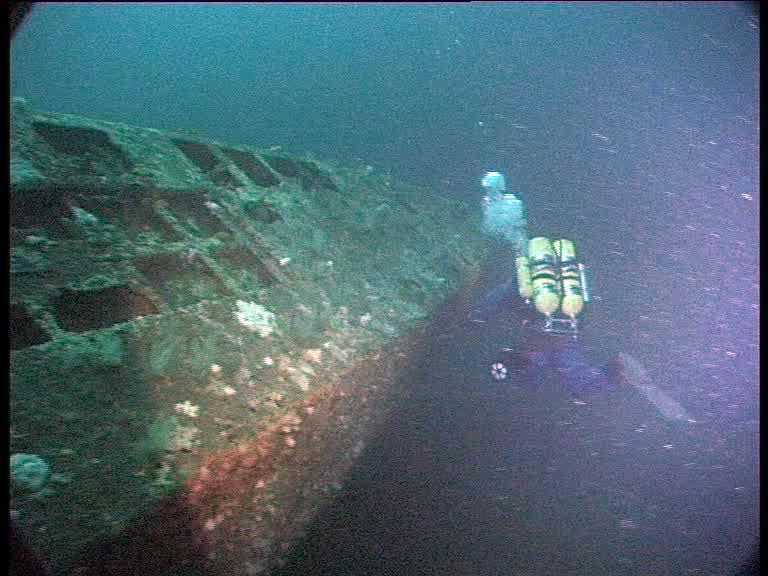
The stern of the U-boat is completely intact. Wreck lying slightly over on its port side (Innes McCartney). 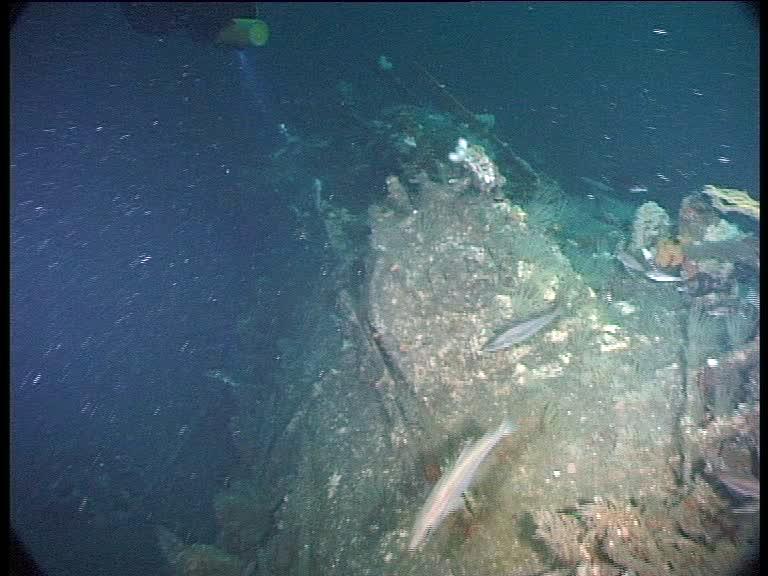
Further forward the entire foredeck has been ripped off. The torpedo loading hatch stands out above the pressure hull (Innes McCartney). 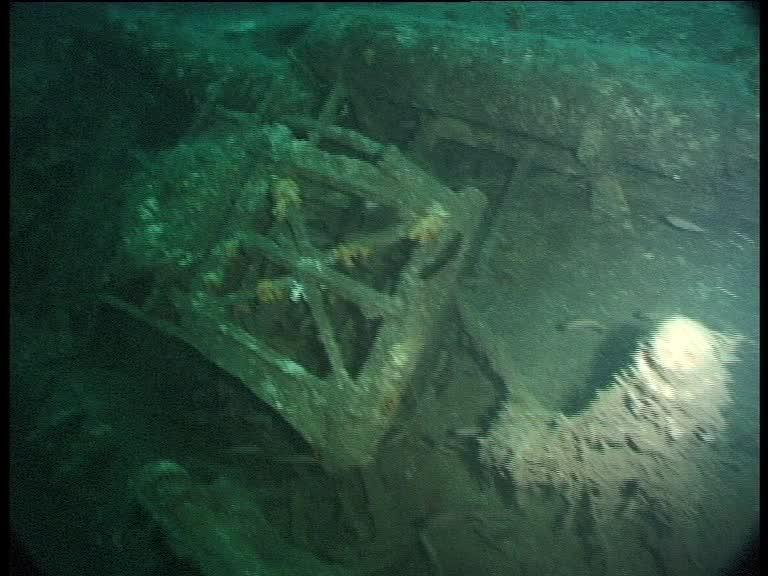
One the foredeck the repeater binnacle is in place (Innes McCartney) 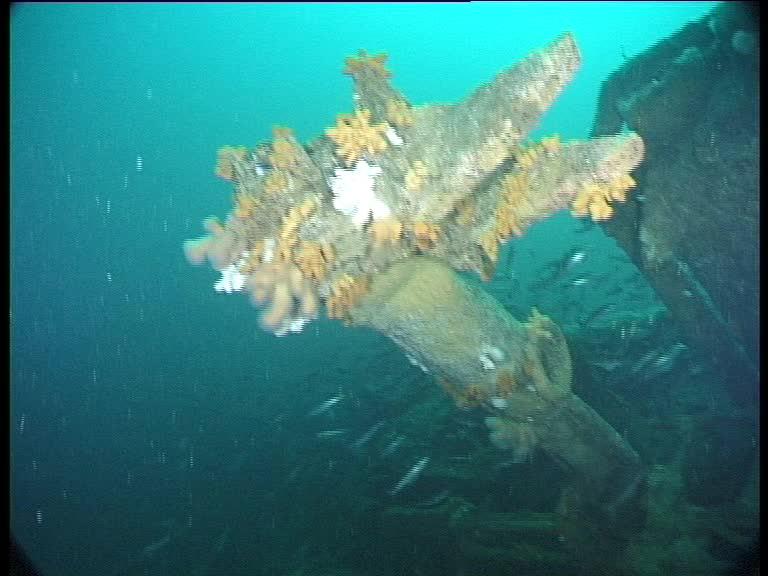
The snorkel mast has broken where it clips into the collar on the front of the conning tower (Innes McCartney). 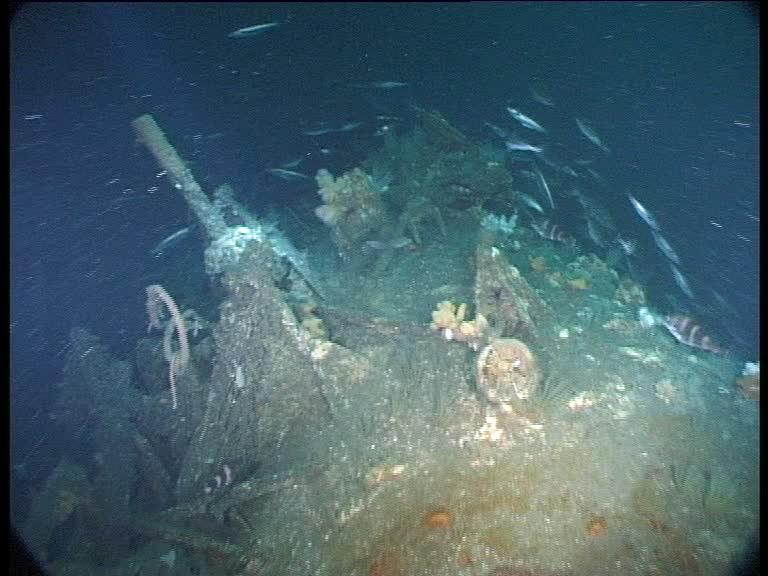
Only the shaft of the windlass remains in place as we reach the bows (Innes McCartney). 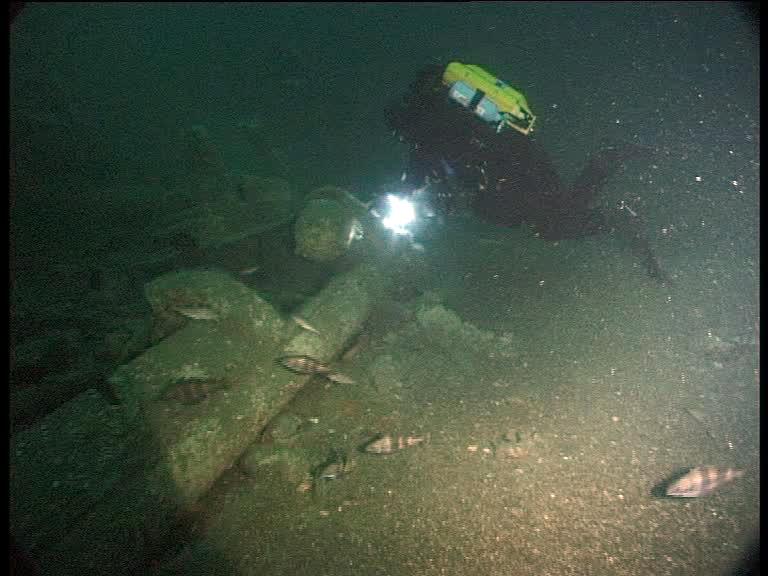
My friend Alan inspects the snorkel (Innes McCartney). 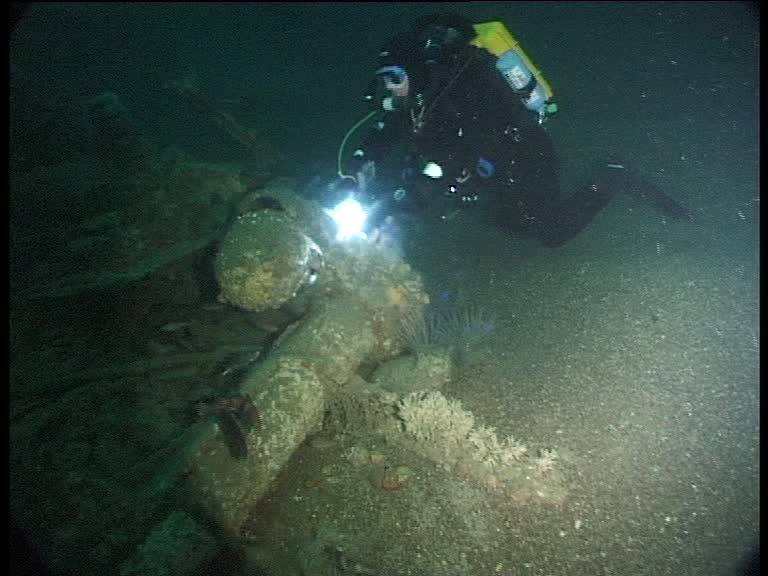
Steel torpedo tube of a late-war U-boat (Innes McCartney). 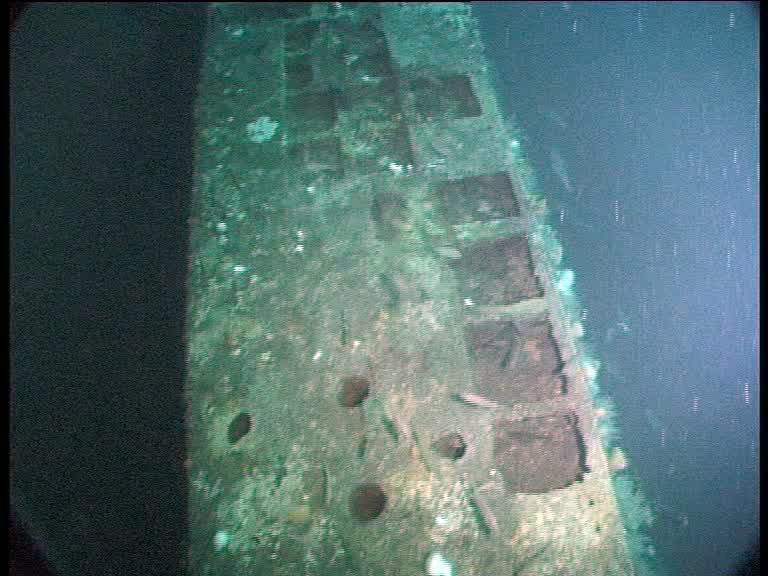
The base of of the mast with the early flange joint can be seen to have been bent in this shot (Innes McCartney). 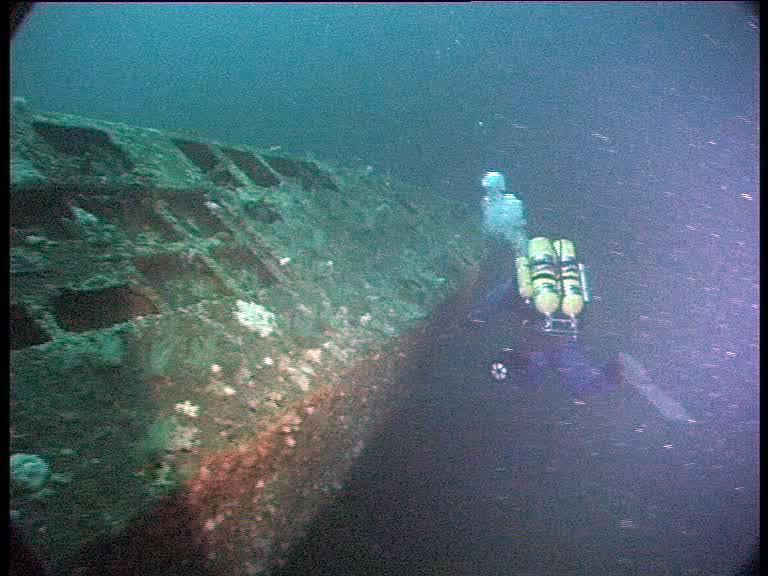
The stern of the U-boat is completely intact. Wreck lying slightly over on its port side (Innes McCartney). 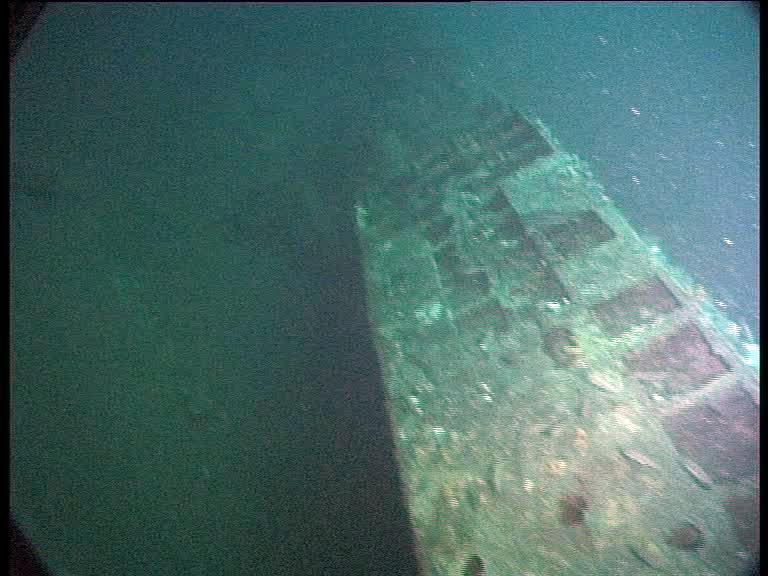
The after deck looks intact we swim toward the conning tower (Innes McCartney). 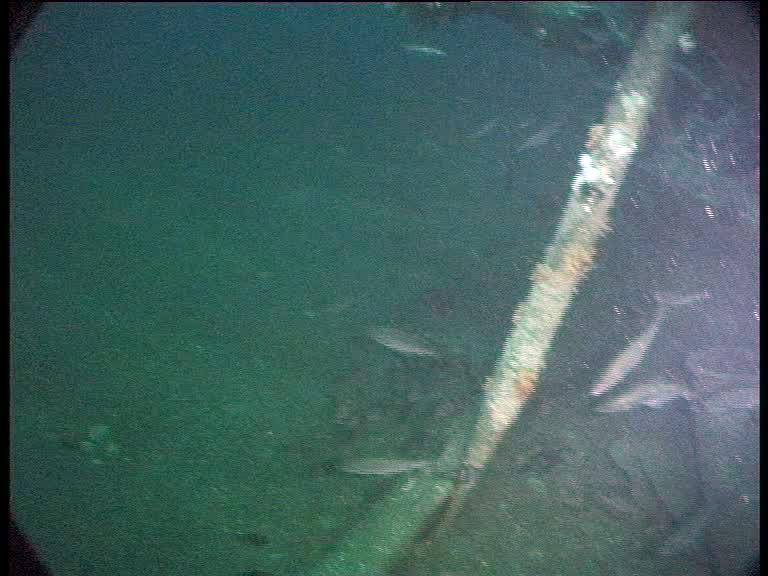
See here from the other side. I conclude then, the the Corvette hit the U-boat from the foward starboard quarter, ripped off the top deck, the bows and then ran up over the conning tower, bending or snapping off the the snorkel and periscopes.. The U-boat was finished in this collision and no escape was feasible (Innes McCartney). 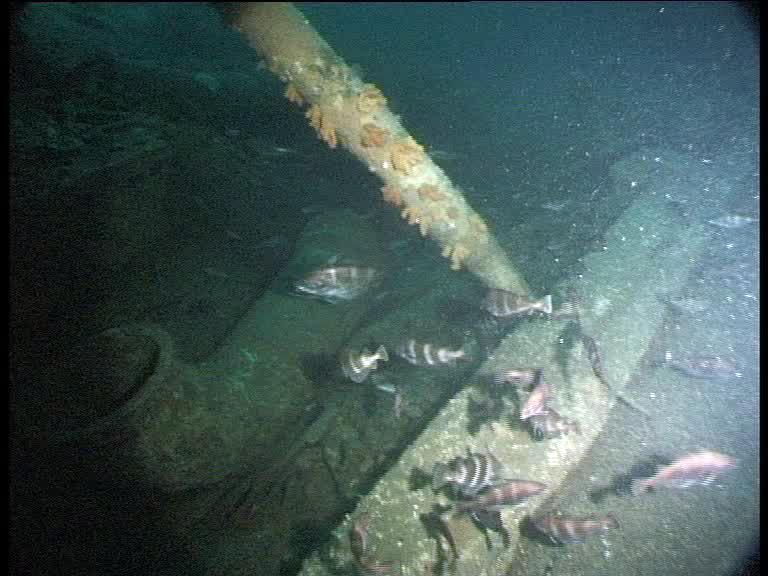
Dr. Innes McCartney – Nautical Archaeologist, Naval Historian and 26 years a Wreck Diver.
